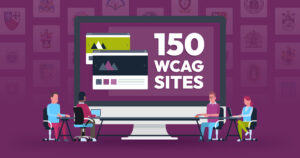What is digital accessibility?
We all know about physical accessibility – adapting buildings and places so that they can be used by people with physical impairments. But do you know there’s also digital accessibility too? It has the same basis and involves making online resources accessible to everyone, not just those who have good sight and can use a keyboard and mouse.
About 7% of adults have some form of impairment, which means digitally inaccessible websites are not user-friendly to all and in fact are a barrier for a lot of people. This is a particular problem for public resources and services because it prevents people getting the help they need and to which they are entitled.
In September 2020, a new law was announced by the government requiring all public bodies to have a website compliant with the WCAG 2.1AA accessibility standard. Aubergine were at the forefront of developing websites that met the standard, and are extremely proud to have national recognition for our expertise. This has been achieved through authoring the National Association of Local Council’s (NALC) Guidebook to Website Accessibility & Publishing for all its 11,000+ member councils as well as strong partnerships with local council associations and the SLCC – Society of Local Council Clerks.
And this month we’re celebrating because we have built over 150 WCAG 2.1AA compliant websites for councils from Cornwall to Cumbria. It’s great to know that our work will be making a difference to thousands of people across the country.
We have a list and map showing a selection of those council websites – if there is anything we can help you with, just get in touch.

